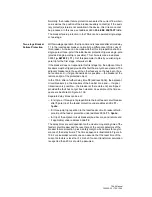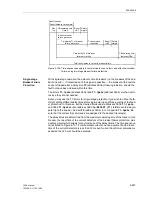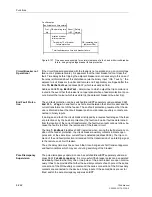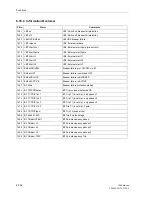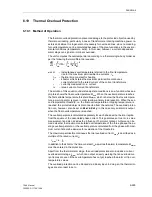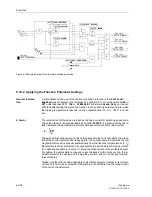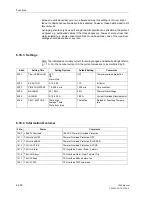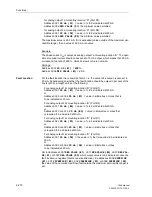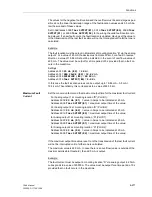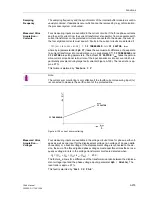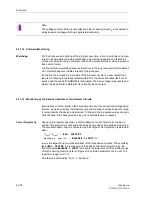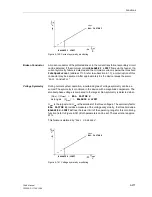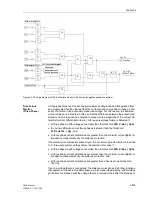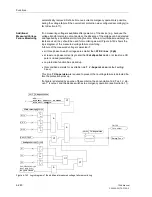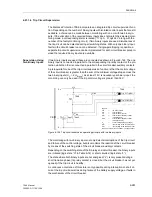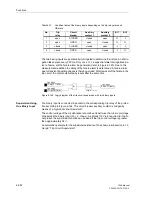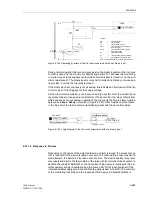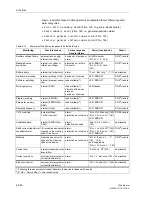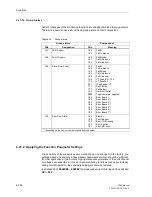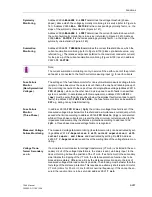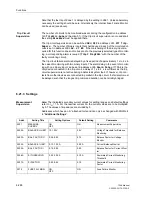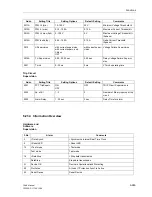
Functions
6-274
7SA6 Manual
C53000-G1176-C156-2
6.21
Monitoring Functions
The device incorporates extensive monitoring functions of both the device hardware
and software; the measured values are also continually checked to ensure their plau-
sibility; the current and voltage transformer secondary circuits are thereby substantial-
ly covered by the monitoring function. Furthermore it is possible to implement a trip
circuit supervision function by means of the available binary inputs.
6.21.1 Method of Operation
6.21.1.1 Hardware Monitoring
The device is monitored from the measuring inputs up to the command relays. Moni-
toring circuits and the processor check the hardware for faults and inadmissible states.
Auxiliary and
Reference Voltages
The 5 V processor voltage is monitored by the hardware, as the processor would no
longer function once the voltage is below the minimum value threshold. The device is
taken out of service. On recovery of the voltage the processor system is restarted.
If the auxiliary supply fails or is switched off, the device is taken out of service; this
state is alarmed by a normally closed contact (can be changed to a normally open con-
tact via jumper, refer to subsection 8.1.3) Short dips in the auxiliary supply voltage do
not affect the serviceability of the device (refer to Sub-section 10.1.2 in the technical
data).
The processor monitors the offset and reference voltage of the ADC (analogue-to-dig-
ital converter). In the case of inadmissible deviations, the protection is blocked; per-
manent faults are alarmed.
Buffer Battery
The charging state of the internal battery buffer, which ensures the correct function of
the internal clock and the storage of counters and alarms in the event of auxiliary sup-
ply failure is cyclically checked. If the voltage drops below the minimum permissible
level, the alarm “
Fail Battery
” is issued.
If the device is not fed with auxiliary voltage for more than 1 to 2 days, the internal
back-up battery is switched off automatically, i.e. the time is not registered any more.
Messages and fault recordings keep stored.
Memory Modules
The working memory (RAM) is tested during booting of the system. If a fault is detect-
ed, the booting sequence is terminated and a LED blinks. During operation the mem-
ory is checked by means of its checksum.
A checksum of the program memory (EPROM) is cyclically generated and compared
with the stored program checksum.
A checksum for the parameter memory (EEPROM) is cyclically generated and com-
pared with the checksum which is computed after each change of the stored parame-
ters.
If a fault is detected, the processor system is restarted.
Summary of Contents for siprotec 7SA6
Page 2: ...Siemens Aktiengesellschaft Book No C53000 G1176 C156 2 ...
Page 18: ...xviii 7SA6 Manual C53000 G1176 C156 2 ...
Page 32: ...Introduction 1 14 7SA6 Manual C53000 G1176 C156 2 ...
Page 82: ...Hardware and Connections 2 50 7SA6 Manual C53000 G1176 C156 2 ...
Page 119: ...SIPROTEC 4 Devices 4 25 7SA6 Manual C53000 G1176 C156 2 Figure 4 20 CFC Logic example ...
Page 190: ...Configuration 5 62 7SA6 Manual C53000 G1176 C156 2 ...
Page 652: ...Installation and Commissioning 8 78 7SA6 Manual C53000 G1176 C156 2 ...
Page 724: ...Technical Data 10 56 7SA6 Manual C53000 G1176 C156 ...
Page 800: ...Appendix A 76 7SA6 Manual C53000 G1176 C156 2 ...
Page 866: ...Appendix B 66 7SA6 Manual C53000 G1176 C156 2 ...

